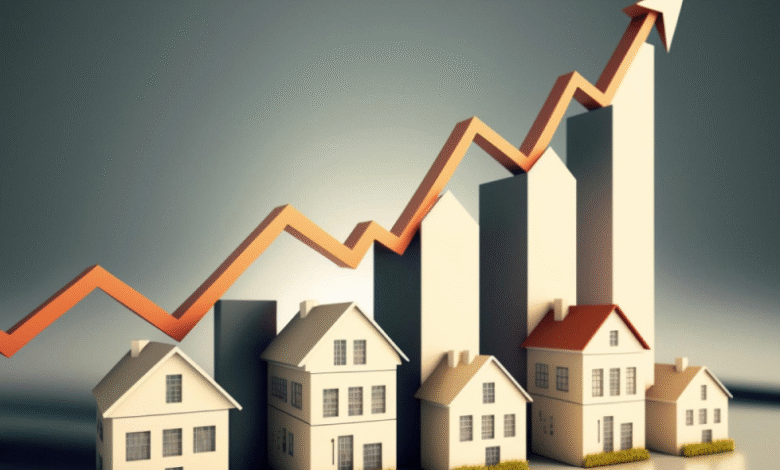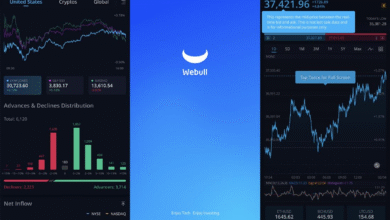Housing Market’s Impact on Economic Growth in 2023

The housing market is poised to significantly impact economic growth in the second half of the year, as highlighted by Goldman Sachs’ latest analysis. Chief economist Jan Hatzius warns that residential investment may plummet by 8% compared to the same period last year, a trend largely driven by rising affordability issues and shifting immigration patterns. These challenges are contributing to concerning real estate trends, including a slowdown in homebuilding activities. The outlook indicates that multifamily construction will remain low, while fewer new single-family homes are expected to be initiated as buyers resort to measures like mortgage buydowns to cope with financial pressures. Overall, the current state of the housing market signals a turbulent period ahead for both consumers and investors alike.
Focusing on the real estate sector, various factors are converging to shape the future landscape of residential housing. The current environment of increased costs and affordability dilemmas is presenting obstacles for prospective homeowners, while simultaneously restraining economic expansion. Furthermore, with a noticeable deceleration in new construction and a tightening labor market, we are witnessing emerging patterns that could redefine housing availability and purchase intentions. Amid these dynamics, the residential property segment must navigate a delicate balance between demand, availability, and ongoing fiscal pressures, signaling a notable shift in the paradigm of homeownership.
Impact of the Housing Market on Economic Growth
The current trajectory of the housing market presents a concerning outlook for economic growth as we move into the latter half of the year. According to Goldman Sachs, residential investment is expected to plummet by 8% compared to last year, raising alarms among economists. This marked decline can serve as a significant drag on overall economic performance, reflecting how pivotal the housing sector is to the broader economy. The interplay between residential investment and economic output highlights the need for stakeholders to closely monitor real estate trends, as they can directly influence GDP growth.
Several factors contribute to the debilitating effects of the housing market on economic growth, with declining affordability being a major concern. Rising home prices and interest rates have eroded purchasing power, pushing potential buyers out of the market. Additionally, immigration restrictions have curtailed the formation of new households, which is crucial for sustained demand in the housing sector. As fewer households emerge, we can expect a correspondingly slow growth in residential investment, further jeopardizing the economic forecast.
Challenges in Residential Investment
Residential investment is experiencing turbulence, largely due to increasing concerns over affordability within the housing market. The recent predictions indicate that multifamily homebuilding is set to stay stagnant through the year’s end. This stagnation not only implies fewer available homes but also denotes a broader trend of reduced residential investment, which serves as a barometer for economic health. The decline is compounded by an observable trend where homebuyers are gravitating towards mortgage buydowns to combat high interest rates, underscoring the pressing affordability issues in the housing market.
Moreover, the anticipated downturn in the single-family home market is raising eyebrows among economists. As rates rise, builders may hesitate to break ground on new projects, leading to a slowdown in home construction and further constraining the availability of housing. This residential investment slowdown reverberates through the economy, affecting everything from job creation to consumer spending, thereby placing additional pressure on economic growth as we head into the final months of the year.
Real Estate Trends and Their Implications
The evolution of real estate trends in today’s market is increasingly influenced by external economic factors, particularly labor market dynamics. Recent nonfarm payroll reports have indicated a slowdown in hiring, which could further exacerbate existing challenges in the housing market. With reduced hiring activities, potential homeowners may feel less secure in making significant financial commitments, leading to a further decrease in homebuying intentions. Subsequently, this decline in demand may hamper housing market recovery and hinder residential investment prospects.
In addition, the interplay between labor market conditions and the housing market reveals how isolated changes can have extensive repercussions. As the housing market struggles to adapt to these economic signals, we may witness stagnation in real estate prices and a slowdown in construction activities. This environment not only complicates homeownership for many individuals but can also impact economic growth on a much larger scale, as the housing sector anchors many ancillary industries.
Affordability Issues in the Housing Sector
Affordability issues dominate the discussion surrounding the housing market, particularly as we confront rising interest rates and persistent home price increases. Many potential buyers are finding it increasingly difficult to enter the market, prompting a shift in buyer behavior towards more affordable options and alternative financing solutions like mortgage buydowns. These strategies, while useful, highlight the overarching challenge of housing affordability, which continues to limit the pool of buyers, impacting the volume of residential investment and overall economic vitality.
As the housing market grapples with these affordability challenges, the consequences extend beyond individual homebuyers to the broader economy. Reduced demand for homes can lead to lower construction activity, which in turn affects job creation in the construction sector and beyond. As residential investment diminishes, economic growth may inevitably slow, demonstrating the intertwined relationship between the housing market and overall economic performance.
The Homebuilding Slowdown and Its Effects
The current slowdown in homebuilding is becoming a focal point for economists as it signifies broader implications for the housing market and economic growth. Goldman Sachs notes that lower levels of multifamily construction coincide with decreased activity in single-family home projects. This slowdown can create a bottleneck in supply, exacerbating affordability issues and frustrating homebuyers seeking suitable housing options. The result is a constrained market where the balance between supply and demand is heavily skewed.
Moreover, the repercussions of a homebuilding slowdown can ripple through various sectors of the economy. With fewer homes entering the market, industries associated with real estate, such as construction materials, labor, and ancillary services, may confront diminished demand. This creates a cycle that can further depress economic growth as job opportunities shrink and consumer confidence falters. Understanding this slowdown is critical for policymakers aiming to revitalize the housing market, stimulate residential investment, and support both economic growth and homeowner aspirations.
Effects of Immigration on Housing Market Dynamics
Recent shifts in immigration policies have stirred discussion regarding their impact on housing market dynamics and economic growth. As highlighted by Goldman Sachs, a slowdown in immigration can negatively affect household formation rates. With fewer new households entering the market, demand for housing contracts significantly, complicating an already challenging environment for residential investment. These evolving immigration trends not only affect individual lives but have a tangible impact on the economy as a whole.
Furthermore, reduced immigration poses extensive implications for the housing market. As potential demographic growth stalls, the demand for new homes decreases, ultimately leading to lower economic productivity. Housing demand is intricately connected to population growth, and when immigration is constrained, so is the potential for economic expansion. Therefore, revisiting immigration strategies may be essential for both stabilizing the housing market and fostering a more robust economic environment.
Deteriorating Labor Market and Housing Trends
The labor market’s deterioration is lending urgency to concerns about the housing market’s viability and overall economic growth. Recent data revealing diminished hiring align with the observations made by economists, pointing towards a possible recession in economic activity. As employers hesitate to fill positions or expand their teams, the consequential impact on household incomes could further aggravate existing affordability issues. Without stable jobs, potential buyers may also delay their home purchasing decisions, leading to stagnation in residential investment.
On a broader scale, the connection between labor market performance and housing trends is deeply intertwined. A robust job market typically generates increased demand for housing, as more individuals are able to afford homeownership. Conversely, a downturn means less disposable income and, subsequently, lower demand for homes. With the rising cost of living and increasing uncertainty surrounding job security, the housing market faces daunting challenges that could hinder long-term economic growth and recovery.
Future Outlook of the Housing Market
Experts suggest that the future outlook of the housing market hinges on various economic indicators, including inflation, interest rates, and broader economic activity. As conditions remain unstable, predictions are tempered by concerns around affordability and the impact on potential buyers’ purchasing power. The continued monitoring of residential investment trends will likely play a crucial role in discerning the direction of the housing market in the months to come.
Additionally, as housing prices adjust to economic realities, the market may see a shift in buyer demographics, with younger buyers seeking more affordable options or alternative living arrangements. The landscape of the housing market is continually evolving, and economic growth remains contingent on adaptability within the sector. Keeping a close eye on these developments is vital for gauging potential risks and identifying avenues for growth in an increasingly complex economic environment.
Frequently Asked Questions
How is the housing market impacting economic growth?
The housing market is projected to significantly hinder economic growth, particularly in the latter half of the year. According to Goldman Sachs, residential investment is expected to decrease by 8% compared to the same period last year, primarily due to declines in affordability and immigration.
What are the current trends in residential investment within the housing market?
Current trends indicate that residential investment will remain a major drag on economic growth. Multifamily homebuilding is forecasted to continue at low levels through December, while new single-family home constructions are also expected to decline, pointing to a slowdown in the housing market.
What factors are contributing to affordability issues in the housing market?
Affordability issues in the housing market are attributed to several factors, including rising mortgage rates and increased costs associated with home purchases. The growing popularity of mortgage buydowns, where buyers pay extra to lower their rates, highlights the ongoing challenges many face in affording homes.
How does immigration affect household formation and the housing market?
Immigration plays a crucial role in household formation, which directly influences the housing market. A slowdown in immigration, particularly due to stricter border controls, is likely to restrict new household formations, further impacting demand in the housing market.
What implications does a slowdown in the labor market have on housing trends?
A slowdown in the labor market can exacerbate existing challenges within the housing market. Reduced hiring activity, as seen in recent nonfarm payroll reports, may lead to decreased consumer confidence and subsequently lower demand for housing, contributing to adverse trends in real estate.
| Key Point | Details |
|---|---|
| Goldman Sachs Forecast | The housing market will hinder economic growth in the latter half of 2023. |
| Projected Residential Investment Decline | Residential investment is projected to decrease by 8% compared to last year. |
| Main Reasons for Weakness | Declines in affordability and immigration. |
| Impact of Immigration Laws | Slowdown in immigration is limiting household formation due to stricter border policies. |
| Homebuilding Trends | Multifamily homebuilding remains low; starts for single-family homes expected to decline. |
| Affordability Indicators | Increase in mortgage buydowns by buyers to lower rates. |
| Labor Market Impact | Slow labor market conditions are anticipated to worsen housing trends. |
Summary
The housing market is set to face significant challenges in the latter half of 2023, as indicated by Goldman Sachs. With a projected 8% decline in residential investment and ongoing issues such as decreased affordability and stricter immigration laws, the housing market’s current state poses a risk to broader economic growth. Additionally, low levels of multifamily homebuilding and a decline in new single-family home initiations contribute to the stagnant conditions. As these factors evolve, they will markedly impact the stability and dynamics of the housing market.




